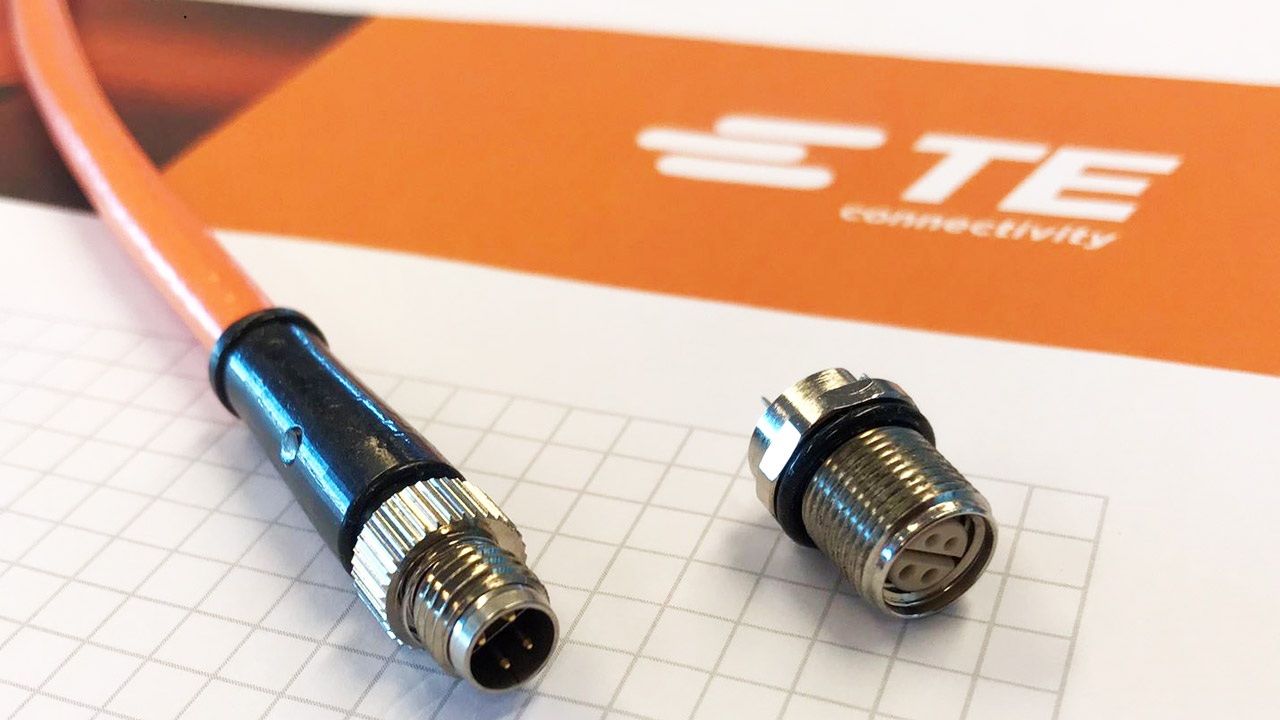TechnologyJanuary 22, 2022
IIoT network trends and the role of Single Pair Ethernet

Looking at industry and the need for fully Ethernet-based networks, Single Pair Ethernet (SPE) offers a promising solution. SPE only requires two wires to transfer data and power and is designed in a way that, over an entire network, all machines can talk in the same language.
We are in the middle of the fourth revolution. Or, otherwise known as the Industrial Internet of Things (IIoT). Following the first three waves of rapid changes in technology — first the steam engine, then electricity, then the computer — IIoT is now the primary driver for change.
Because of IIoT, factories are getting smarter, machines are more connected, and productivity is increasing. As companies look to further optimize IIoT systems, they must be able to effectively gather data from each part of the IIoT network. This requires interconnecting each data source with secure, reliable connections so each data point is stored in a larger database for further analysis.
IIoT network trends
As IIoT networks become more common, they become more complex. More complex networks mean the number of devices per network increases. At the same time, networks have become decentralized due to increased amounts of connectivity locally and on the factory floor. This movement underscores the need for more dustproof and waterproof solutions in order to withstand the harsh environment. IP20 regulations won’t hold up and instead IP67-compliant products need to be used.
Another industry trend that impacts IIoT networks is the rise of miniaturization. The cost of nodes is decreasing and they’re getting smaller. Plus, the connectivity per device is increasing. In order to fit the expectations of increased connectivity while making products smaller, a new style of industrial connector is necessary to realize the interconnect.
Lastly, today’s automation networks are built out of different communication protocols, ranging from serial to BUS to Ethernet communication. With increased complexity, decentralization and miniaturization, streamlining communication protocols will help increase overall productivity and establish a free flow of data from the network to the database. In addition, combining an Ethernet-based network with an IP will give you an IP addressable network. This means the entire network is easier to access and add additional devices to.
Ethernet network architecture
In order to build a productive and effective Ethernet-based IIoT network, there are multiple levels and stages to consider. The first is the servo and motor drive portion of the network, which is created by various OEMs.
The OEM chooses which connectivity types to use, which then impacts the larger system in which it will eventually be used — the second level of our network architecture. For example, robotics applications or control cabinets utilize servo and motor drives, so the machine will need to be constructed in a manner that will connect securely to the OEMs original connector type. This is where it’s important to select the right cable connectors and field installable connectors.
The last level of the network is handled by installers, where multiple pieces of equipment are interconnected as part of a larger build. In these situations, cordsets and field installable connectors are used to create a cohesive network on all levels.

While SPE has been in use in the automotive industry, SPE is relatively new to the industrial space.
IIoT networks of tomorrow
Looking at where the industry is headed and the need for fully Ethernet-based networks, Single Pair Ethernet (SPE) offers a promising solution. SPE only requires two wires (rather than eight) to transfer data and power.
SPE technology is designed in a way that, over an entire network, all machines can talk in the same language. The need for translation between the various communication standards is eliminated compared to older network styles. SPE provides one network with one language in communication that all machines can understand and use.
Besides improved efficiency, the benefits of SPE include reduced complexity and costs, increased flexibility in designs, and a scalable foundation to go beyond previous limited speed and interoperability.
While SPE has been in use in the high-volume environment of the automotive industry, where space saving, high performance and shared weight solutions are especially valuable, SPE is relatively new to the industrial space.
However, its benefits are quickly proving obvious in the industrial automation sector and in the industrial internet of things (IIoT). Both require increasingly complex systems yet are built on an outdated legacy of multiple communication standards. At TE Connectivity, we believe SPE is essential to helping IIoT drive industrial automation forward.
As an enabler of IIoT, SPE allows barrier-free communication from the sensor to the cloud. It also provides movement freedom to applications and supports the rise of miniaturization.
SPE enables cross-network real-time communication without any loss in information, which helps industrial engineers build a more streamlined, unified automation ecosystem that are more cost-effective than the traditional ethernet solutions of the past.
The industry is at a tipping point, with an exponential increase in innovation and technology just around the corner. The “smart tech” trends that have overtaken everything from watches and cars to mobile phones and thermostats are coming for industrial automation and IIoT.
These types of smart solutions will come to the industrial market and Single Pair Ethernet will help in accelerating this trend, because it enables the underlying communication to take place seamlessly throughout an expanding IIoT network infrastructure.
New IEC 63171-7 connectivity standard for IIoT implementations
TE Connectivity has been a leader in developing a new Single Pair Ethernet (SPE) standard enabling companies to simply and cost-effectively connect devices on the network edge to make data-driven decisions in real-time. The International Electrotechnical Commission (IEC) 63171-7 standard creates industry consensus on a power-and-data hybrid format that easily integrates machines into a network and improves power distribution.
“Manufacturers often struggle to realize the advantages of IIoT because their networks can’t communicate from the cloud all the way down to an individual sensor on a machine,” said Eric Leijtens, global product management and managing director for TE. “This is why the new ‘-7’ standard is so critical. It helps us overcome that gap in data at the network edge by creating an industry-standard approach for connecting to physical assets in a production environment.”
An industry consortium recommended that M12 hybrid interfaces be specified under the new IEC 63171-7 standard. The standard now has the support of multiple trade groups and more than 80 companies. As one of the most common connector sizes in field-level applications, the M12 format easily connects to existing Ethernet infrastructure, replacing traditional fieldbus and analog solutions. With SPE implemented at the device level, manufacturers can realize transparent, IP-based communication replacing the current solutions that are expensive or have reduced transparency.
The hybrid configuration in “-7” cables also provides increased flexibility to distribute power across the network, instead of the point-to-point connections required in power-over-data lines.
Ruud van den Brink, product manager for industrial communications, TE Connectivity.


